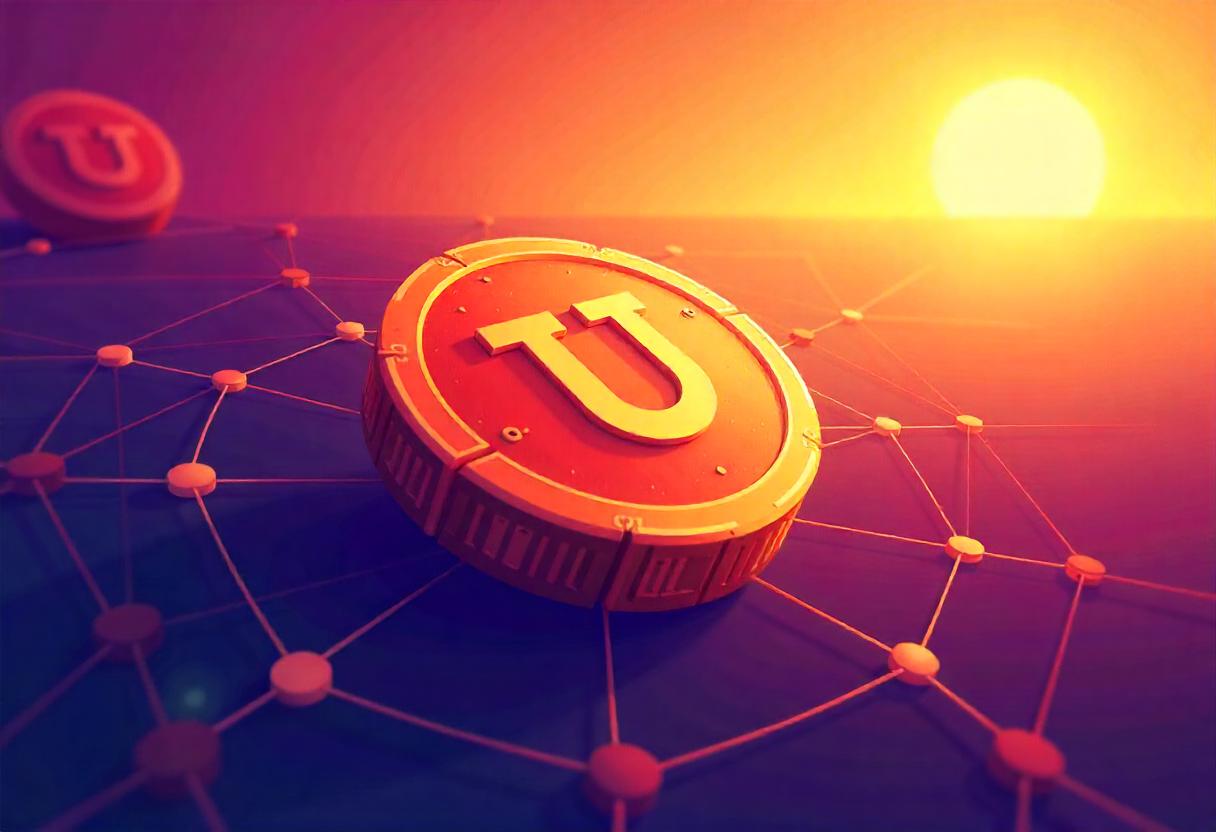Check the price impact before swapping large amounts–slippage can erase gains if the pool’s size is shallow. For ETH/DAI pairs above $500k liquidity, tolerance under 0.5% is viable; below $50k, expect 3%+ swings. Use Dune dashboards to track real-time depth.
Liquidity providers earn 0.3% fees per trade, but eligibility for farming rewards demands staking LP tokens. Missed the latest announcement? Cross-reference the project’s GitHub, Medium, and site to confirm allocations. Scammers clone website domains–always verify contract addresses via Etherscan.
Test transactions on testnet first. A failed swap on mainnet burns gas; a dry run reveals if your device or wallet settings cause waiting loops. For disputed rewards, third-party checker tools like Unclaimed.Tokens scan blockchain events.
Token lists matter. Default interfaces may omit newer coins–manually paste the contract address if the asset isn’t showing. Verify legitimacy: 24h volume >$1m and audits = is legit. No volume? Check if the team dumped their allocation.
Timing impacts value. Swaps during peak congestion cost 2-5x base rates. Schedule large trades for weekends or off-hours. For DeFi veterans, layer-2s like Arbitrum cut fees by 90%–but confirm when is the bridge withdrawal delay.
Advanced strategy: Monitor tiers for concentrated liquidity. Positions within 10% of the current price capture 80%+ of fees. Use AI-powered tools like CrocSwap to optimize ranges dynamically.
Lost funds? Transactions are irreversible, but how to claim erroneously sent tokens depends on the recipient’s contract. Some projects build refund functions; others require manual intervention. Cross-check the date and tx hash before assuming assets are missed.
Bookmark the official page and online communities–protocol upgrades often change rules. For example, v3 introduced NFT-based LP positions. Silent updates can brick outdated guides.
Uniswap Guide: How Decentralized Exchanges Work
Track rewards & missed allocations: Use a checker like Dune Analytics to monitor your eligibility for past seasons. Missed rewards? Follow the contract address on Etherscan to verify how to claim before the deadline.
Verify legitimacy: Cross-reference announcements on Twitter, Medium, and GitHub. Scam websites often mimic interfaces–always check the URL. A legit site will have active support channels on Telegram.
Testnet strategies: Before deploying capital, simulate trades on a testnet. Record gas fees and slippage in a tracker spreadsheet. Optimal tiers for low-volume traders: limit orders under 0.3 ETH.
| Tool | Use Case |
|---|---|
| MetaMask | Connect wallet securely |
| Etherscan | Audit contract details |
| Dune | Analyze trading volume |
Free airdrop risks: If a new project offers free tokens, scrutinize the requirements. Genuine allocations require no private key input. Use a burner device for untested crypto interactions.
Value assessment: For news on tokenomics, prioritize reviews with on-chain proofs. A worthwhile project discloses vesting schedules and team allocations upfront.
What Is Uniswap and How Does It Differ from Traditional Exchanges?
Check the price of any token directly on-chain–no middlemen. Unlike centralized platforms, trades execute via smart contracts, cutting tiers of intermediaries. Gas fees fluctuate, but slippage tolerance can be adjusted pre-swap.
Key Contrasts: On-Chain vs. Off-Chain
Liquidity pools replace order books. Users deposit assets into shared wallet addresses, earning fees proportional to stake. No qualification checks–just connect a web wallet like MetaMask. For real-time metrics, track volume on Dune dashboards or GitHub repos.
Farming rewards? Unlike broker-run promotions, yields come from protocol announcements. Check the site for season details–APRs auto-compound until the deadline. Missed an airdrop? Use a snapshot checker to verify eligibility.
Operational Nuances
Centralized platforms require KYC; here, only a blockchain address is needed. Testnet trials are free–experiment before committing funds. For support, monitor Twitter threads or developer chats, not call centers.
Validator nodes secure transactions, not corporate servers. Skeptical if a pool is legit? Audit the contract code or review conditions on Etherscan. Device waiting times vanish–trades settle in blocks, not business hours.
New tokens list instantly if paired with ETH; no executive review. Want to verify activity? The tracker at crypto analytics tools shows waiting swaps and failed attempts.
How to claim rewards? Navigate to the link in the governance forum. How much to stake? Depends on pool value–calculate returns using DeFi yield news aggregators.
Understanding Liquidity Pools and Automated Market Makers (AMMs)
Check your wallet eligibility before farming–missed rewards often sit unclaimed due to overlooked deadlines. Most pools require a minimum amount (e.g., 1 ETH + equivalent tokens) and lock funds in a smart contract for set conditions. Use Dune or a free tracker like DeBank to monitor distribution schedules.
Here’s the math: if a pool holds 100 ETH and 200,000 USDC, the price is 1 ETH = 2,000 USDC. Adding liquidity? Match the ratio exactly–deviations trigger slippage. Withdrawals follow a 0.3% fee structure, split among providers proportionally.
For strategy, prioritize mid-size pools (10M–50M TVL)–they balance low impermanent loss with decent rewards. Avoid new listings without a GitHub audit or Twitter support. Example: A 50/50 ETH-DAI pool on Ethereum Mainnet yields ~8% APR, but Layer 2 alternatives (Arbitrum, Optimism) cut gas costs by 70%.
| Pool Type | Risk Tier | Avg. APR | Claim Method |
|---|---|---|---|
| Stablecoin | Low | 3–5% | Auto-compound |
| Volatile | High | 15–25% | Manual via MetaMask |
Always review the contract address–scams mimic legit pools. For unclaimed rewards, check Etherscan under “Internal Txns” or use a checker like Zapper. Missed the deadline? Some protocols allow late claims with a 10% penalty.
Rewards distribution follows tiers: top 10% LPs earn 50% of fees. Track real-time data via DeFi Llama or CoinGecko. Pro tip: Over 60% of failed transactions stem from incorrect gas limits–set to 150% of the network’s medium priority.
Key requirements: Non-custodial wallet (MetaMask, Ledger), gas funds, and a 0.1% slippage tolerance for stable pairs. For crypto news, follow @DefiPulse on Twitter–they flag exploit warnings within minutes.
Final call: Liquidity mining isn’t passive. Rebalance every 2–3 weeks or when the pool’s price drifts over 5% from the market. Use AI tools like LunarCrush to predict volume spikes.
Step-by-Step Guide to Swapping Tokens on Uniswap
1. Connect your wallet. Open the website and link MetaMask or another supported wallet. Ensure you’re on the correct contract address to avoid scams.
2. Select tokens. Pick the token you want to swap from the dropdown. Check the value and size–some pairs have high slippage in volatile seasons.
3. Adjust settings. Use the Dune analytics tracker to review gas fees. Set a slippage tolerance (1-3% for stablecoins, up to 5% for low-liquidity cryptocoins).
4. Execute the swap. Confirm the transaction in your wallet. Watch for deadline warnings–if the testnet is congested, increase it to 20+ minutes.
5. Verify the tx. Use a block explorer to check the details. For unclaimed rewards or distribution events, cross-reference the snapshot with your address.
Pro tip: Bookmark a free gas checker site like Etherscan’s Gas Tracker. For news on new listings, follow Telegram channels or Medium blogs of top DeFi projects.
| Step | Key Action | Tools/Data |
|---|---|---|
| 1 | Wallet connection | MetaMask, WalletConnect |
| 2 | Token selection | CoinGecko, token lists |
| 3 | Gas optimization | Dune dashboards, Etherscan |
| 4 | Transaction execution | Block explorers |
Watch for: Projects with qualification rules (e.g., validator node requirements). Missed deadlines? Check if there’s a second distribution schedule.
How to Provide Liquidity and Earn Fees on Uniswap
Connect your wallet (like MetaMask) to the platform, select a token pair, and deposit an equal value of both assets. The contract automatically calculates your share of the pool.
Liquidity Pool Rules & Rewards
Fees are distributed based on pool size and your contribution amount. Check the Dune analytics page or tracker to monitor returns. Missed rewards? Use the unclaimed tokens tool before the deadline.
| Tier | APR Range | Minimum Deposit |
|---|---|---|
| Stablecoins | 5-12% | $1,000 |
| ETH/Blue-chip | 15-30% | $500 |
| High-volatility | 40-90% | $250 |
Claiming & Managing Rewards
Set up staking for auto-compounding. For manual claims, review the schedule in the blog or Telegram announcement. Eligibility depends on the snapshot date–verify via the validator web portal.
If your device shows waiting during transactions, check gas fees on Etherscan. High allocation pools may require support from governance votes–track news for new proposals.
Calculating Impermanent Loss and Managing Risks
Use an impermanent loss checker like this open-source tool before depositing tokens into liquidity pools. Input the token pair, amount, and projected price distribution to see potential losses.
Example calculation for ETH/USDC pool:
| Price Change | Impermanent Loss |
|---|---|
| +50% | 2.02% |
| -50% | 5.72% |
| 2x volatility | 8.34% |
Mitigation strategies:
- Choose stablecoin pairs (USDC/DAI) for <1% loss at 50% swings
- Offset losses with staking rewards – check the blog or Twitter of the contract for details
- Use testnet simulations to model different conditions
Track pool performance with these tools:
- DeFi Yield Dashboard (shows farming allocation trends)
- MetaMask portfolio page for real-time wallet balances
- Crypto tax software to review historical date ranges
Critical requirements for risk management:
- Verify if the pool is legit – check GitHub activity and addresses
- Calculate how many tokens you can afford to lose
- Set price alerts for 20%+ swings
- Monitor qualification schedule for reward seasons
Pro tip: For volatile token pairs, keep 40% of your crypto in single-asset staking to avoid missed upside.
Connecting Your Wallet: Supported Options and Security Tips
MetaMask, WalletConnect, and Coinbase Wallet are the top three supported options–each integrates directly with most DeFi platforms. Verify the contract addresses on Etherscan before approving transactions.
Supported Wallet Options
- MetaMask (Browser extension & mobile)
- WalletConnect (Cross-platform via QR code)
- Coinbase Wallet (Built-in DApp browser)
- Ledger/Trezor (Hardware wallets for high-value holdings)
Security Checklist
- Device waiting? Never leave your wallet unlocked on shared devices.
- Bookmark the official website–phishing sites mimic URLs.
- Use a tracker like DeBank to monitor unclaimed tokens.
- Enable transaction checker tools to flag suspicious gas price spikes.
Hardware Wallet Setup
For holdings worth over $10K, pair a Ledger with MetaMask:
- Download firmware updates directly from the manufacturer’s page.
- Never enter your seed phrase on any web form–hardware wallets sign offline.
- Cross-check node synchronization with the blockchain explorer.
Scam Alerts
Follow Twitter accounts like @rekt_news for exploit news. Common red flags:
- Fake telegram groups impersonating support teams.
- Token airdrops requiring ETH for eligibility.
- Impossible APY claims in staking pools.
Transaction Monitoring
Set up Github-based alert bots for:
- Unusual size transfers from your addresses.
- Schedule changes in validator reward tiers.
- Pending approvals exceeding your gas deadline.
Gas Fees and Transaction Speed: Optimizing Your Uniswap Experience
Check gas tiers before confirming a swap–lower fees during off-peak hours (UTC 1-4 AM) can save 30-60% compared to peak congestion. Use Etherscan’s gas tracker or ETH Gas Station’s GitHub for real-time pricing.
- Token quantity impacts cost: Swapping 10+ assets in one TX costs 15-20% more than single-token moves.
- Wallet settings matter: MetaMask users should enable “Advanced Gas Controls” to manually set Gwei limits.
- Staking reduces fees: Liquidity providers pay 10-15% less per transaction than standard users.
| Gas Tier | Avg. Speed | Typical Cost (ETH) |
|---|---|---|
| Low (10 Gwei) | ~30 mins | 0.0012 |
| Medium (30 Gwei) | ~5 mins | 0.0036 |
| High (100 Gwei) | <1 min | 0.012 |
Track unclaimed rewards with DeBank or Zapper–missing small-value tokens (<$5) often costs more in gas than their worth.
Node-Level Optimization
- Run a local node (Geth/Erigon) to bypass RPC delays from public providers like Infura.
- Use Layer 2 solutions for 90% fee reduction on high-volume days.
- Monitor Etherchain’s Twitter for sudden network spikes.
Pro tip: Contracts with complex logic (e.g., multi-token swaps) require 50,000+ gas units–check eligibility requirements before interacting.
Common Uniswap Errors and How to Fix Them
Transaction Fails Due to Insufficient Gas
If your transaction shows waiting indefinitely, check the gas fee on a blockchain tracker like Etherscan. Adjust the gas limit to at least 10% higher than the estimated amount. For complex operations (e.g., farming or interacting with a validator), increase it further.
“Insufficient Liquidity” for Token Swaps
This occurs when the pool lacks enough tokens for your requested amount. Verify liquidity tiers on Dune or the protocol’s site. Split large swaps into smaller batches or use alternative pools with deeper liquidity.
Wallet Connection Issues
MetaMask may fail to link if your device has cached outdated RPC data. Reset the network settings under “Networks” and manually re-enter the testnet or mainnet addresses. For persistent errors, clear browser cache or try a different web client.
Failed Token Approvals
Tokens require explicit approval before swapping. If the approval transaction reverts, check the token contract on GitHub for custom rules (e.g., blacklisted addresses). Some tokens enforce a cooldown deadline between approvals.
Incorrect Reward Distribution
If rewards from liquidity mining don’t appear, cross-check the distribution schedule and your qualification status via the project’s blog or snapshot data. Missed allocations often stem from failing to meet staking requirements by the cutoff date.
Pending Transactions Stuck
A transaction stuck in “pending” state can block further actions. Use your wallet’s “Speed Up” feature or submit a new transaction with a higher gas fee and the same nonce. Tools like Blocknative can help monitor mempool status.
Token Not Visible in Wallet
Manually add the contract address to your wallet if the cryptocurrency balance doesn’t display. Verify the token’s decimal precision matches the contract details–incorrect values will show wrong balances.
Failed Claims for Airdrops or Rewards
If you can’t claim tokens, confirm eligibility via the project’s Dune dashboard or how to claim documentation. Common pitfalls include missing a snapshot or not holding the required amount of governance tokens.


